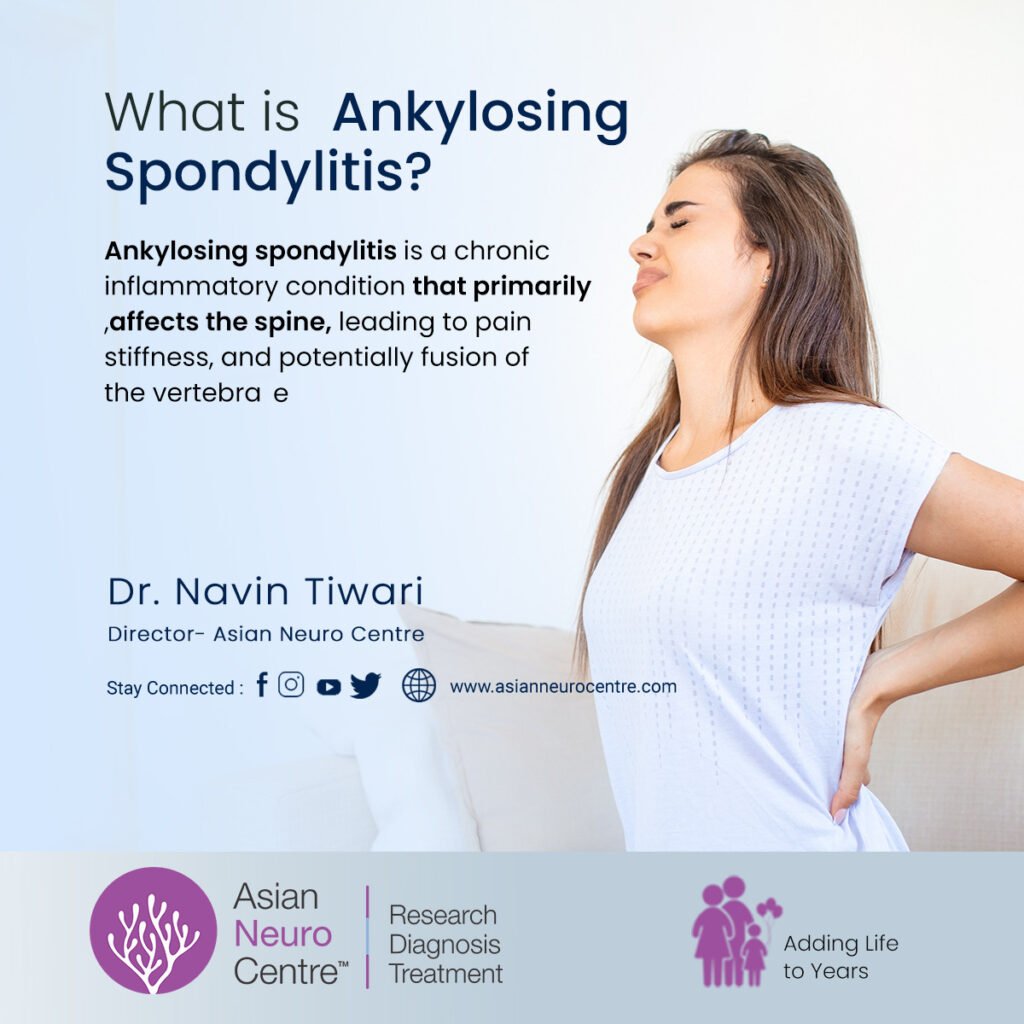- Have any questions?
- 911 12345 29
- info@asianneurocentre.com
What is Ankylosing Spondylitis?, Symptoms, Causes, Treatment & More
What is Lumbar Spondylitis?,Symptoms, Causes, Treatment & More
October 3, 2023Difference Between Ankylosing Spondylitis and Lumbar Spondylitis – Asian Neuro Centre
October 10, 2023What is Ankylosing Spondylitis?
Ankylosing spondylitis (AS) is a long-term health condition that affects the spine and can make it stiff and painful. It’s caused by your own immune system attacking your spine and causing inflammation. The inflammation can lead to the bones in your spine fusing together over time, making your back less flexible.
AS often starts when you’re young, in your late teens or twenties, and it can last a lifetime. It’s more common in some families, so if your relatives have it, you might be at a higher risk.
Treatments like exercises and medications can help manage the pain and stiffness, allowing you to lead a more comfortable life. It’s essential to work closely with a doctor to find the right treatment plan for you.

Symptoms of Ankylosing Spondylitis
- Back Pain: AS usually begins with persistent lower back pain.
- Stiffness: Your back might feel stiff and inflexible, like trying to bend a wooden stick. This stiffness is often worse in the early morning or after sitting for a while.
- AS can affect your ability to take deep breaths due to restricted movement in the chest.
- You might feel unusually tired, even after a full night’s sleep, as if your energy is running low.
- In some cases, AS can cause eye inflammation, leading to redness, pain, and sensitivity to light.
Causes of Ankylosing Spondylitis
- If your parents or close relatives have it, you might be more likely to get it too.
- Your immune system’s job is to protect you from illnesses, but in AS, it mistakenly attacks your own body, specifically your spine and joints. This attack leads to inflammation and pain.
- While genetics and the immune system play a big role, some environmental factors, like infections, could trigger AS in people who are genetically predisposed.
Treatment of Ankylosing Spondylitis
- Exercise helps keep your spine flexible and your joints moving. Your doctor or a physical therapist can guide you on the right exercises.
- There are medicines that can help control inflammation and pain.
- Therapists teach you exercises and techniques to reduce pain and improve posture.
- Maintaining a healthy weight, quitting smoking, and practicing good posture are essential for managing AS.
Dr. Navin Tiwari
Consulting Neurologist
